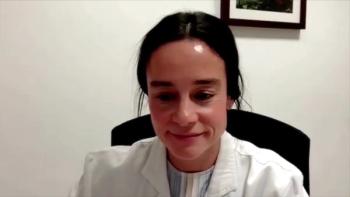
Dr John Santopietro Outlines Carolinas' Move to a Virtual Behavioral Health Team
In order to provide care to people with behavioral health issues early, in the primary care setting, Carolinas HealthCare System set up a virtual behavioral health provider team that can provide care to the 200 primary care offices and roughly 800,000 people in need that are part of the system, explained John Santopietro, chief clinical officer of behavioral health at Carolinas HealthCare System.
In order to provide care to people with behavioral health issues early, in the primary care setting, Carolinas HealthCare System set up a virtual behavioral health provider team that can provide care to the 200 primary care offices and roughly 800,000 people in need that are part of the system, explained John Santopietro, chief clinical officer of behavioral health at Carolinas HealthCare System.
Transcript (slightly modified)
How has Carolinas HealthCare System deconstructed and virtually reconstructed the behavioral health provider?
Our challenge at Carolinas HealthCare System—3 years ago, when we started a service line of behavioral health, was to take care of the population. And we know that 1 in 4 or 5 people is suffering from a behavioral health issue at any given time. So in primary care for us at Carolinas HealthCare System that is 200 primary care offices, about 800,000 people, so that's a lot of people. We were charged with, "please, help us take care of that population." And to try to take care of them in primary care, before it gets worse, where there's less stigma and patients were more likely to come and talk about things, even than go and see a psychiatrist.
We looked around the country—this was 3 years ago—and said, "there are a few models, but what's the one that fits best with us and that has a lot of data a support?" So we found the IMPACT Model, or the Collaborative Care Model, out of the University of Washington—Drs Katon and Unützer developed that—and we picked that model.
Now that model has a role called the BHP, or the behavioral health provider, that is usually co-located in a primary care office, but again we had 200 primary care offices: we couldn't afford to hire enough people out of the gate and that's when we started thinking about a virtual behavioral health team. Not just telepsychiatry, but a whole team that is virtual. And in order to do that, we took that role of the BHP and deconstructed it, and said, "What does that person do?" Well, they diagnose, and they screen, and they sometimes do therapy, and they help people navigate, and they do a lot of talking back and forth between the primary care team and the psychiatrist—a lot of communication. And of course, you need a psychiatrist.
So we deconstructed that role and reconstructed it, reconstituted it, with a virtually built team. So we have a pharmacist; we have a social worker; we have a therapist; we have a psychiatrist, of course; navigators; and coaches. And that's our recontructed behavioral health provider that's really now a virtual team that you can now deploy to a number of primary care offices.
Newsletter
Stay ahead of policy, cost, and value—subscribe to AJMC for expert insights at the intersection of clinical care and health economics.







































